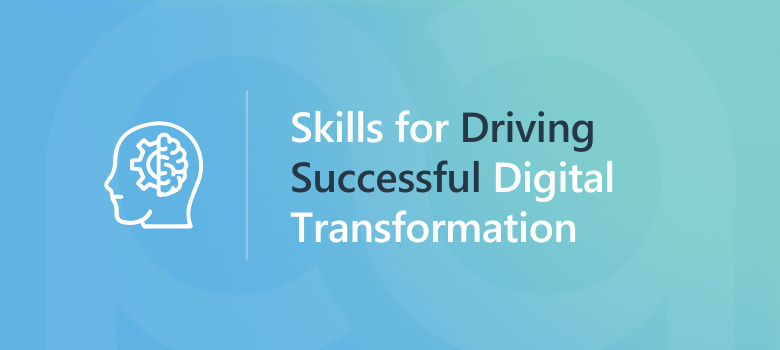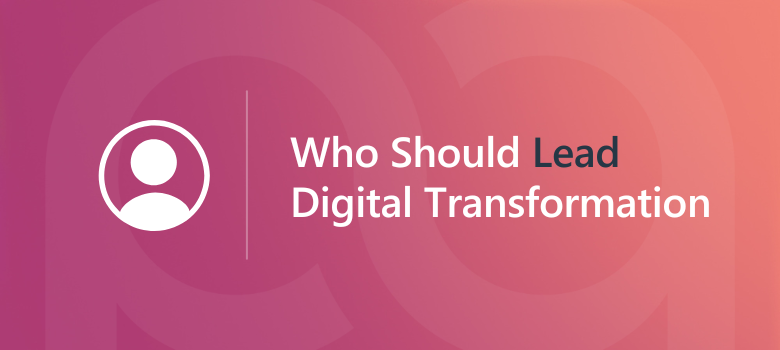A Manufacturer’s Guide to Digital Transformation
Manufacturing companies have already shown their strength over the past year, and the future of the industry is bright: Organizations have the chance to drive a renaissance that empowers them to transform their processes and achieve greater success. They’re also growing quickly. In fact, according to Deloitte, the industry is expected to grow by 2.5 percent in GDP in 2023 alone. Manufacturers are determined to grow despite uncertainty.
However, it isn’t all sunshine and rainbows for the manufacturing industry. With issues related to inflation, economic uncertainty, talent shortages, and supply-chain issues, manufacturers will need to invest in advanced technologies that empower them to mitigate risks and improve agility. They will also need to have a clear digital strategy to prepare a holistic, successful approach to transformation.
In this blog, we’ll offer a complete guide to digital transformation, including essential skills, where to focus your budget, how to define leadership, and the results you can expect to see as a result of your hard work.

5 Essential Skills for Driving Successful Digital Transformation
Although organizations pour a lot of time, energy, and money into their digital transformations, many still fail. Navigating successful digital transformation requires technical expertise, great leadership skills, and a strategic mindset. Here are some of the skills individuals will need to drive consistent digital transformation initiatives.
- An Agile Mindset: Digital transformation is a strategic endeavor that requires a clear vision and a deep understanding of an organization’s goals. Those involved in the transformation should possess strategic and agile thinking skills so they can identify the right initiatives, define priorities based on impact, and develop a clear roadmap for implementation.
- Change Management: Because digital transformation involves significant changes in processes and culture, leaders need to have strong change management skills to communicate benefits efficiently, address resistance, and guide the organization through transitions. They need to create a culture of continuous improvement and innovation.
- Security Awareness: Digital transformation leaders should be able to effectively develop and deliver security awareness information that educates employees about potential threats, safe computing practices, and the importance of data protection. Creating a security-conscious culture will mitigate security risks, both IT and OT security, to foster a proactive mindset within the organization.
- Collaboration and Delegation: Leaders can’t handle everything alone—and they shouldn’t try to. A digital transformation plan will only work if leaders delegate some of the responsibility to trusted team members. They need to have strong leadership skills that bring diverse stakeholders together, facilitate collaboration, and guide the organization toward a shared vision.
- Continuous Improvement: Digital transformation is a dynamic process. Leaders should have a mindset of continuous improvement and learning so that they always stay up to date with emerging technologies, industry trends, and best practices. Embracing change and being open to experimentation will be key to successful transformation.
At the end of the day, digital transformation is not just about technology: It’s about empowering your people with the right skills and mindset to leverage technology effectively and drive meaningful change.

Where to Focus Your Budget
When defining a digital transformation budget, manufacturers should prioritize the investments that align with their goals and objectives. Here are some areas you may consider focusing on as you build out your budget:
- Automation: Invest in technologies with automation and machine-learning capabilities to streamline production, increase efficiency, and reduce costs.
- Cloud Computing: Consider adopting cloud computing services and infrastructure to enhance data storage, scalability, and accessibility. This will enable your team to collaborate across locations, share data, and perform remote monitoring.
- Cybersecurity: A portion of your budget must go toward cybersecurity solutions in order to protect sensitive data, intellectual property, and operational technologies from cyber threats.
- Data Analytics and AI: Analytics tools and AI technologies are essential for analyzing the vast amounts of data involved in manufacturing. Utilize these solutions, along with tools like a data platform, to identify patterns, optimize processes, and make data-driven decisions.
- Supply-Chain Optimization: From demand forecasting and inventory management to logistics management and supplier collaboration, digital solutions can optimize the end-to-end supply chain and help reduce costs, improve agility, and enhance customer satisfaction.
- Change Management: Digital transformation will be meaningless if your team isn’t well equipped to adapt to the new technologies and processes. Don’t forget to allocate resources for training and ongoing enablement to ensure the smooth adoption of digital transformation across your organization.
- Continuous Improvement and Innovation: With the time your team saves on low-value work, be sure to encourage employees to experiment with new ideas and processes. Set aside a portion of your budget for fostering innovation within the organization.
Before you dive into your digital transformation initiatives, conduct a thorough assessment of your current state, including your greatest challenges and goals. Your budget should reflect the objectives you’d like to achieve.

Who Should Lead Digital Transformation
The leadership of digital transformation is crucial to its success. Many times, a CIO is the leader in charge, but that isn’t always the case. While an organization may choose an individual to represent and lead transformational change, it’s important that collective effort is given to the investment—it will require buy-in from executives, department heads, and employees from all levels and departments. Leadership should foster a culture of innovation and promote effective communication and collaboration throughout the transformation and the organization.
In an ideal world, your digital transformation leadership model will integrate all three levels of leadership. Here are a few additional factors to consider as you develop a plan:
- Scope of Transformation: Are you planning a large, disruptive change to operations? You will likely need someone with authority and great leadership skills to take charge, like a CEO or CIO. On the other hand, if your transformation is more modest in scope, you may only need to appoint a department lead.
- Company Size: If you have a large company, you may need to have a dedicated team or individual in charge of the transformation, as they will need to balance the objectives of different stakeholders and departments. In a smaller company, the CEO or CIO might be able to lead the change themselves because it will be less complex.
- Digital Maturity: Companies that have just started their digital transformation journey may not be prepared to commit to a large-scale transformation yet, which means starting with decentralized responsibility may be best. However, if you’re further along in your transformation, a specialist will offer a more centralized effort.
Because all digital transformations are different, whoever leads the charge will need to tailor their leadership to their organization’s specific needs and goals, taking into account the culture and conditions that will best create the change they need.

Expected Results
When digital transformation is done right, it can offer transformational benefits that empower manufacturers to drive growth and improve performance. For example, the following are some of the key outcomes organizations can expect:
- Improved operational efficiency: By leveraging technologies such as automation and AI, companies can drive streamlined production, reduce downtime, and improve inventory management.
- Enhanced product quality: Identify defects or issues early on in the process by integrating digital technologies into the manufacturing process. With predictive maintenance, real-time monitoring, and automated quality control, you can develop higher-quality products and lower rejection rates.
- Increased productivity: Handle repetitive tasks so employees can focus on high-value activities. Utilize data-driven insights to optimize resource allocation, identify bottlenecks, and improve processes.
- Accelerated innovation: Digital transformation facilitates the rapid development of products. Platforms enable manufacturers to test and refine designs before physical production, reducing costs and time to market.
- Optimized supply chain: Because transformation offers real-time visibility across the supply chain, you can enhance collaboration across suppliers, manufacturers, and distributors to optimize inventory management and ensure products are available at the right time.
- Improved employee engagement: By empowering employees with real-time data and insights, digital transformation enables them to make better decisions and contribute to process improvements.
- Sustainability: Digital transformation can help manufacturers adopt sustainable practices by optimizing consumption, reducing waste, and monitoring environmental impact.
Most significantly, digital transformation provides organizations with the scalability, flexibility, and agility they need to grow and adapt to changing market conditions. For example, cloud computing allows organizations to scale their infrastructure and resources, pursue growth opportunities, and adapt more quickly. In turn, manufacturers that invest in digital transformation can maintain a competitive edge, drive sustained growth, and attract more customers.
Relying on a Partner for Your Digital Transformation
Luckily, you don’t need to handle your digital transformation alone. ProArch’s manufacturing IT services and consulting help manufacturers achieve a competitive edge in the rapidly evolving manufacturing industry. With our support, we can empower you to leverage technology in ways that position you to succeed now and well into the future.
Are you ready to dive into your digital transformation with a team that will go above and beyond for your organization? Learn more about ProArch today.

Director of Marketing Rebecca leads ProArch's marketing efforts, seamlessly blending technology and storytelling to assist clients in their buying journey. She is dedicated to presenting technological solutions in a compelling manner that drives significant growth for the company. Collaborating closely with sales, engineering, leadership, and HR teams, Rebecca sets the strategic vision for ProArch and ensures alignment across the organization. Her strategic, visionary, and detail-oriented approach shapes ProArch’s brand to be synonymous with reimagining technology to achieve business objectives.
